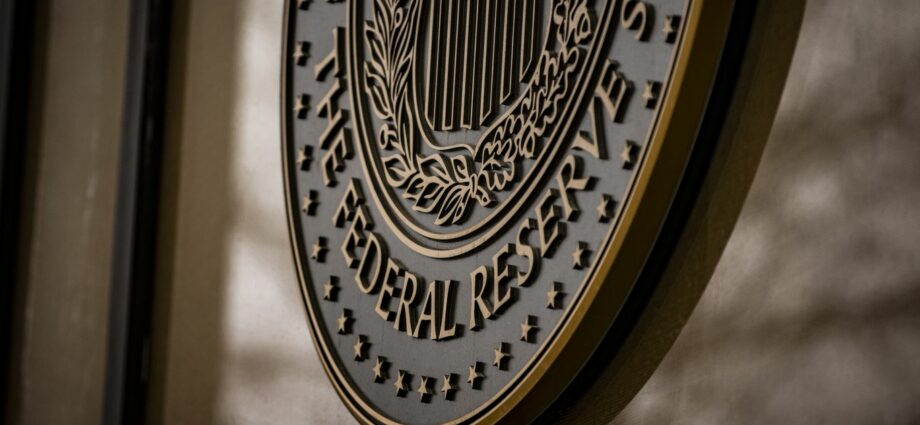The Federal Reserve building in Washington, DC. Photo: Samuel Corum/Bloomberg via Getty Images
The Federal Reserve raised its target interest rate by a quarter-percentage point Wednesday while acknowledging that problems in the banking system triggered by its previous rate increases are likely to weigh on the economy.
Why it matters: The Fed is continuing its campaign to bring down inflation through monetary tightening, even as cracks appear in the financial system.
- It is betting that other tools, like emergency lending and deposit guarantees, will contain damage among U.S. banks, and prevent a steep economic slowdown.
Driving the news: Following a two-day meeting, the policy-setting Federal Open Market Committee raised its federal funds rate target to a range of 4.75% to 5%, the highest it has been since 2007.
- In an accompanying statement, however, it said that "recent developments are likely to result in tighter credit conditions for household and businesses and to weigh on economic activity, hiring, and inflation."
- "The extent of these effects is uncertain," the committee added.
In formal projections, Fed officials' expectations for how the economy will perform and how high rates will rise over the remainder of the year were little changed. The median official expected target rates to rise to 5.1%, the same as previous projections set at the end of last year.
- Notably, none of the officials forecast rate cuts between now and year-end, contrary to the expected moves priced into financial markets that have become more gloomy about the outlook over the last two weeks.
What they're saying: In their policy statement, the officials did signal more flexibility on what further rate moves might occur, saying that "some additional policy firming may be appropriate."
- That's a contrast with the previous language that "ongoing increases in the target range will be appropriate."
State of play: With inflation still trending far higher than the Fed aims for and the economy proving resilient, the central bank had signaled for weeks that more rate hikes were on the way. As recently as two weeks ago, Chair Jerome Powell raised the possibility of an extra-large half-percentage point rate hike.
- However, shortly after that testimony, Silicon Valley Bank was seized by regulators, followed shortly by Signature Bank, prompting fears of a broad run on regional banks across the United States.
- They were undone by losses on longer-term bonds that lost value due to the Fed's aggressive rate hikes over the last year, which triggered depositor flight.
- The Fed and other regulators intervened to guarantee SVB depositors and backstop other banks at risk, aiming to contain the damage.
Between the lines: The distress in the banking system could cause credit to contract, triggering a recession, slowing demand and bringing down inflation. But it is a fluid, fast-moving, and uncertain situation.
- The Fed is betting that Wednesday's rate hike will help it maintain credibility in its fight on inflation, while maintaining the option of adjusting monetary policy in the future if a bank-induced slowdown occurs.
Of note: Wednesday's decision was unanimous, even as commentators outside the central bank have been divided on what the Fed might do next.
Source: Read Full Article
-
NYC Mayor Eric Adams Says Cop Attack Is 'Clear Case' For Rolling Back Bail Reform Law
-
Cancer patient leaves ‘hell hole’ hotel over ‘pee and blood’ stained mattress
-
Is a shark a fish? | The Sun
-
Alexey Navalny’s daughter issues rallying cry for Russia to reject war
-
Kim Jong-un’s powerful sister Kim Yo-jong rejects US calls for diplomacy


